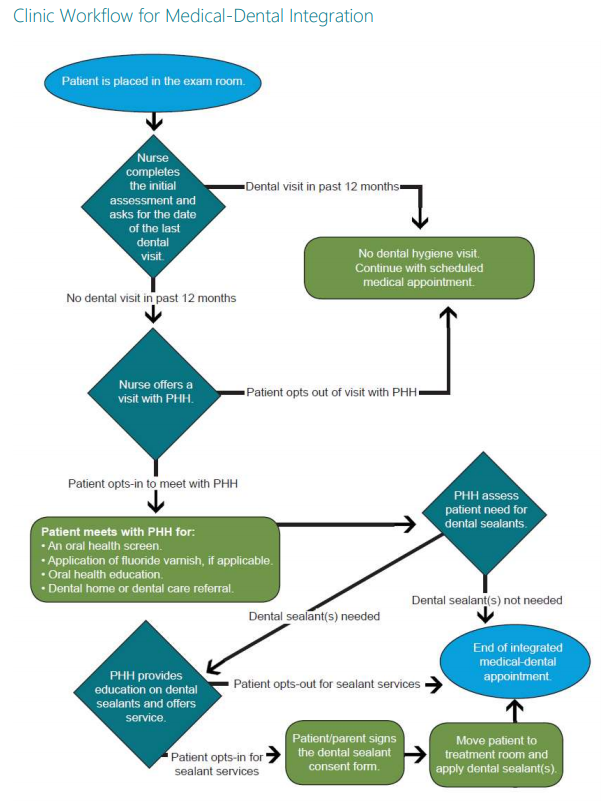The health of the mouth has historically been separated from overall health. Individuals who are low-income, underinsured, uninsured, or on public assistance are less likely to visit a traditional dental clinic but more likely to need dental services. Recognizing this health inequity, the North Dakota Department of Health Oral Health Program hired a public health hygienist in 2018 to work at the University of North Dakota Center for Family Medicine clinic located in Bismarck, North Dakota. The primary goal of the project was to enhance the oral public health infrastructure and capacity by placing a public health hygienist in a medical facility to provide care coordination, oral health screenings, fluoride varnish, education, and referrals to low-income and uninsured patients.
The public health hygienist, employed by the oral health program, is tasked with providing oral health education to medical residents and medical staff and providing direct oral health care preventive services and oral health education to pediatric patients and their families. The public health hygienist works as a member of the medical care team, which includes participating in team huddles, provider meetings, and treatment planning. In addition to providing education and resources during a patient’s visit, the public health hygienist worked with the University of North Dakota Center for Family Medicine to add dental-related resources in the waiting room or to be available upon request. The public health hygienist also provides 30-minute educational lunch and learns. These sessions are intended for the residents, but clinical care staff is welcome.
Learn More About the Program
- Brief: Improving Health and Dental Care Access in North Dakota, Evaluation of Medical Dental Integration 2023
- Brief: Evaluation of Medical-Dental Integration at the University of North Dakota Center for Family Medicine, 2020-2021
- Brief: Evaluation of Medical-Dental Integration at the University of North Dakota Center for Family Medicine, 2019-2020
- Evaluation Report: Medical-Dental Integration at the University of North Dakota Center for Family Medicine, 2019-2020
- Medical-Dental Integration Manual, 2020
- Benefits of Medical-Dental Integration for Medical Residents, Providers, and Patients, 2018-2019
Clinic Workflow for Medical-Dental Integration
The following is an example of the workflow developed by the medical team at the University of North Dakota Center for Family Medicine in partnership with the public health hygienist (PHH). This is the workflow applied under the MDI pilot project.


